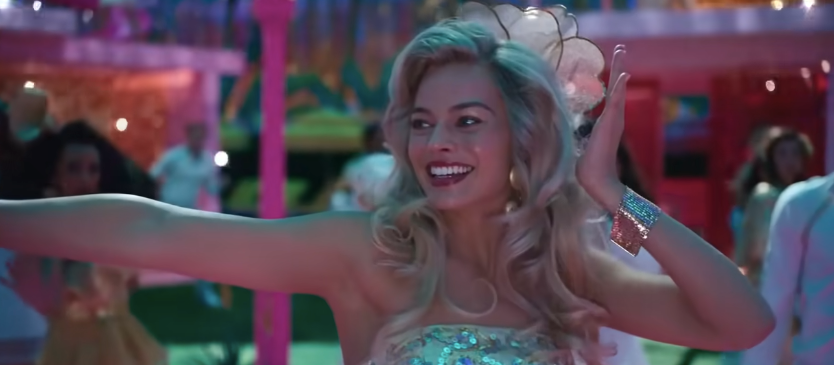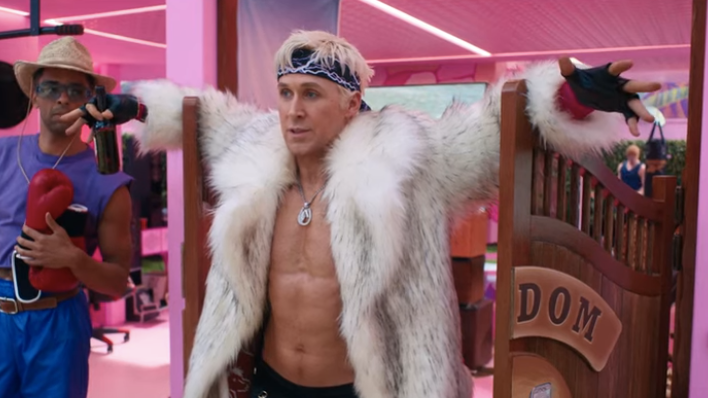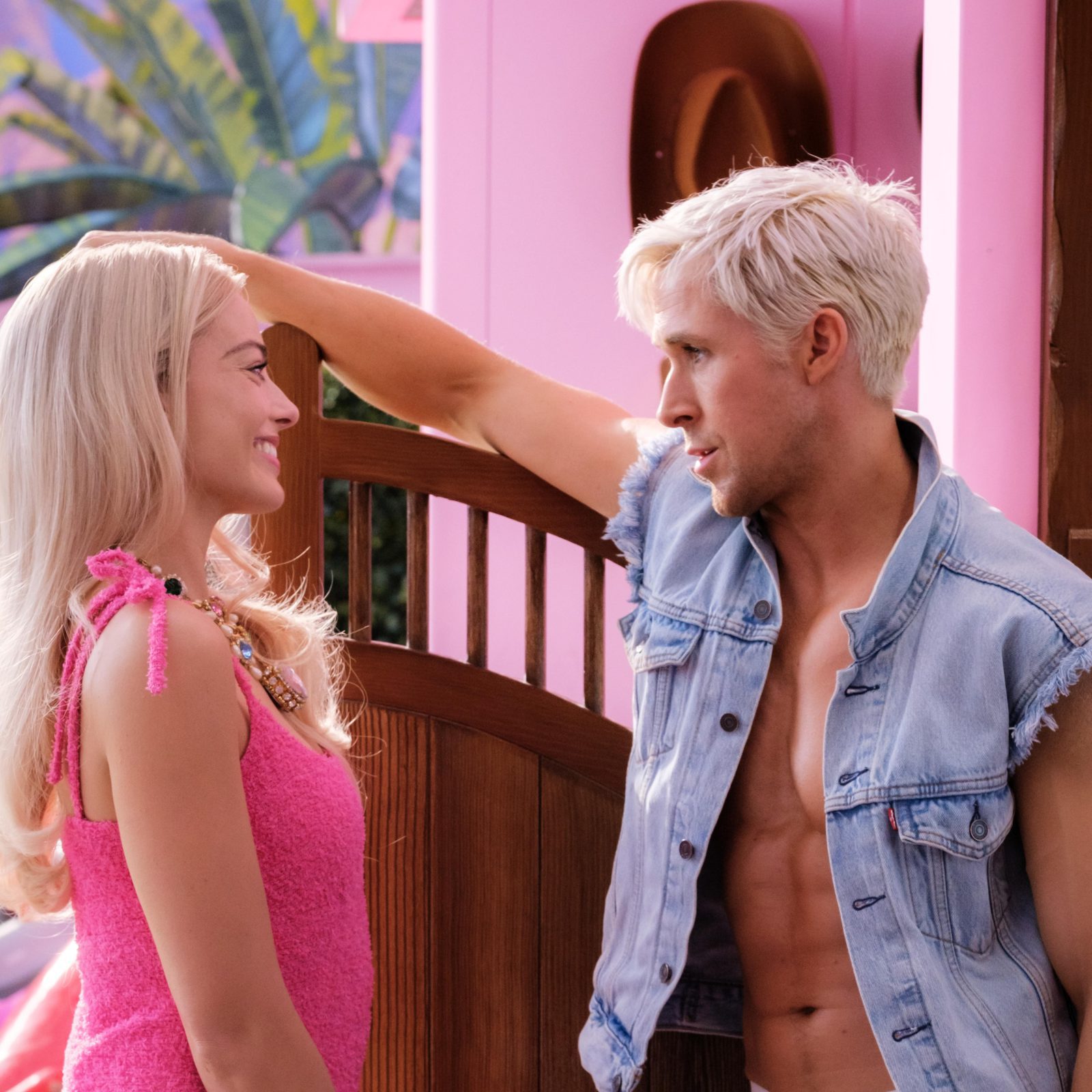Young women’s social media feeds are flooded with plugs for Botox. By our early twenties, modernity is already dangling opportunities in front of us to flee from a universal fate: to age, to wrinkle, and to transition into new stages of life. Sometimes we all need to be shaken by the shoulders and reminded that we are fearfully and wonderfully made.
Greta Gerwig’s Barbie movie does just that. The hot pink blockbuster about a perfectly beautiful plastic doll is actually an affirmation of the complex beauty of human life.
Barbie’s initial world-building sets up Barbieland as a pristine utopia. It’s utopian in its cheerfulness and shiny aesthetics, of course, but also in the literal sense of the word: it’s a non-place. The Barbies and Kens, distinct from humans, are unconstrained by hunger, thirst, injury, or mortality. Their condition is a transhumanist’s dream: physical ease and perfection for eternity.
Also absent from Barbieland are real human sex differences beyond the superficial. Between references to Ken’s “nude blob” and Barbie’s outright declaration that “we don’t have genitals,” the script goes out of its way to emphasize that Barbies and Kens are devoid of sexual organs, let alone the ability to reproduce. Kens use their physical strength only for showing off to Barbies. Barbies don’t give birth or care for children (though one Barbie is, unfortunately for her, eternally pregnant). In this alternate universe, any distinction between the sexes is entirely stylistic.
But this seemingly liberating world is also free of meaningful struggle. While the movie’s initial scenes, packed with friendly greetings, compliments, and affirmations, are fun to watch, they also give the viewer the sense that little of consequence ever gets done. In Barbieland’s golden age of empowerment, women can do anything, yet seem to do nothing that actually matters. The nightly dance party is the culmination of the perfect day, identical to all the days that came before it and will come after. Nothing changes. Nobody grows.

It is fitting, then, that one night when Barbie is dancing, celebrating an endless future of “the best day ever,” she suddenly wonders aloud: “Do you guys ever think about dying?” The bubble that is Barbieland shields her from the struggles inherent in human life. Her identity revolves around empowering girls, but she has no connection to the problems and limitations that define girls’ experiences in the Real World, as the movie calls our world.
That disconnect between utopia and real life is emotionally turbulent for Barbie. Initially, the human condition revolts her. She wakes up the day after asking that shocking question to discover she can smell her own morning breath. She is developing cellulite and normal feet, instead of feet shaped for high heels. These changes are enough to spur an epic journey to the real world to cut any ties she may have to humanity. Once that journey takes her and Ken to Los Angeles, she is forced to reckon with the risks of human sexuality, grasping intuitively that men’s physical strength can give sexual harassment an “undertone of violence.”
As she absorbs more, though, Barbie also discovers the blessings of life. For the first time, she bears witness to childhood, motherhood, and the weightiness of adult relationships. In one of the most touching scenes of the film, Barbie sits at a bus stop and notices the transcendent beauty of an old woman. “You’re so beautiful,” Barbie tells her. “I know it,” the woman replies. In Barbieland, everyone is young, and youth, to be sure, is one kind of beauty. But this woman’s peaceful contentment with the wrinkles earned from a life well lived is another. Barbie realizes that there’s something scarier than cellulite: never moving forward in life’s stages.
Barbie leaves the bus stop torn between two worlds. While she may have embraced some new human traits, she still prefers being a perfect shell. Choosing Barbieland over the real world, which she calls “forever and irrevocably messed up,” she offers up Barbieland as a safe haven to a mother and daughter who feel tired of real-life womanhood.
But to Barbie’s chagrin, on her return she finds her familiar Barbieland is no longer what it used to be. During her and Ken’s adventure to L.A., high-powered male leaders and masculine camaraderie inspired Ken to learn about the “patriarchy.” Ken gets back before Barbie, and succeeds in implementing his idea of patriarchy by transforming Barbieland into the “Kendom.”

The Kendom is hardly any richer in meaning than the original Barbieland. Instead, all it does is make abundantly clear that any effort to replicate human dynamics in the absence of human constraints is nothing more than hollow play-acting. It’s all power games with no real stakes.
Ken’s takeaway from seeing male professional success in the real world is that men are supposed to rule simply because they are men. And so he is bummed to learn that he can’t actually get to the top in the real world without earning it. To live out his fantasy of unearned domination, he creates a crude facsimile of human life in the Kendom. Without mortality looming, Ken and all his fellow Kens aren’t inspired to create a legacy for themselves by doing anything impressive with their power. Without the capacity for desire and reproduction, Barbie and all her fellow Barbies put on revealing outfits to jockey for the Kens’ attention with no particular end in mind.
The Kens’ plot to remake Barbieland for themselves eventually sparks a coup by the Barbies. Their scheme, while successful in restoring their utopia to something resembling its old “normal,” brings Barbieland’s detachment from the human emotional experience into even sharper focus. Women in the real world aren’t just pretending when we take an interest in men’s lives. Many of us genuinely enjoy when our boyfriends play us music, share their interests with us, and teach us new things. Subconsciously, those moments signal investment and competence. Emotionally … sometimes we just fall for someone, and that’s enough. Not created for that kind of attachment, all that Barbies can do is plaster on a smile and pretend to be women in love.
As the movie approaches its end, Barbieland isn’t much different than it was at the start. The Barbies are back to governing a city that doesn’t need to be governed, since everyone is happy and nobody disagrees. The Kens are being challenged to self-actualize in a society still built on superficiality. Having observed a small sliver of human life, Barbie knows that what Barbieland offers her isn’t enough. “I’m not really sure where I belong anymore,” she says.

Suddenly, Ruth Handler, Barbie’s creator, appears and offers her a choice. Barbie can continue existing as she did before, as an idea frozen in time, perfectly smooth and impervious to pain. Or she can become a human being confined to a real and finite life, which, Ruth warns her, can be “pretty uncomfortable.”
Extraordinarily, given the choice between paradise and reality, Barbie chooses real life.
She’s well aware of the risks. Gloria, the disillusioned mother she brought back to Barbieland, at one point delivers an impassioned monologue about how hard and confusing womanhood is in the real world. And yet Barbie, especially after Ruth provides her with a window into human life, is convinced that the chance for deep emotional experiences that intertwine her fate with others’ makes it all worthwhile. In the most literal sense, she would rather die than live a life with no stakes. As Barbie makes this decision, a song plays, asking, “What was I made for?”
The answer, revealed in the last scene, where Barbie heads to the gynecologist for her first-ever checkup, is that she’s made to be a woman. She’s not just made to be a young woman either. She’s made to become that old lady at the bus stop one day too.
When I see Barbie choosing to seek purpose in the constraints of her natural design, I see echoes of my mom refusing to dye away her beautiful strands of gray hair. In a culture where so much technological innovation seeks to liberate women from the so-called perils of motherhood and old age, I can hardly imagine a more important message.
The life God designed for us is challenging. We’re destined to feel pain. We’re destined to die. Our bodies break down, our hearts break, and even the joy of bringing new life into the world requires great sacrifice. But those truths drive us and offer us meaning. We thrive by embracing them, not running off to utopia to play pretend.
Exhausted by science and tech debates that go nowhere?